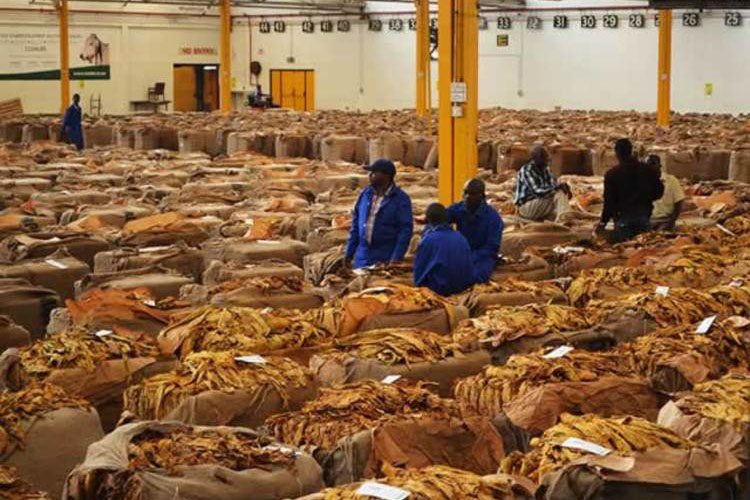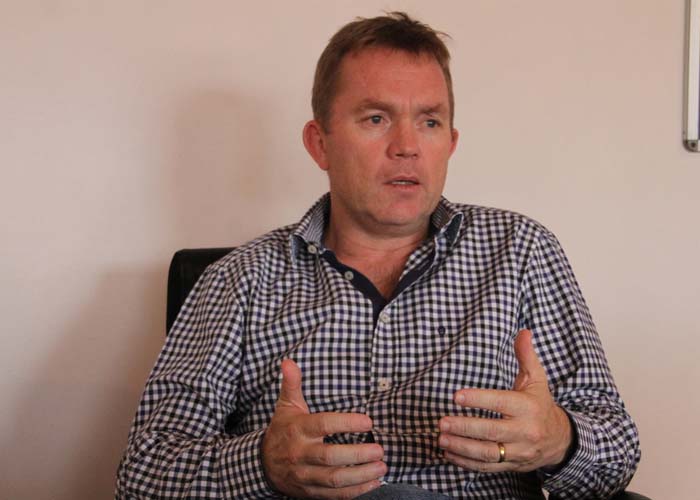
The Sunday Mail

Africa Moyo
GOVERNMENT has earmarked US$20 million for the phased reopening of Shabani-Mashaba Mines (SMM) after a recent due diligence report compiled at the behest of the Ministry of Mines and Mining Development indicated that they could be a market for chrysotile asbestos both on the local market and in Asia. But there are strong indications that India, which is the world’s sixth-largest economy, could provide a lucrative market for the product.
The asbestos miner — which is owned 100 percent by African Associated Mines (AA Mines) Zimbabwe Limited — mothballed operations at its Zvishavane and Mashaba mines in 2009. It is currently under judicial management. Much of Government’s motivation to revive the mining giant lies in the amount of the resource at the Zvishavane-based mining claims. It is understood that SMM could be sitting on US$600 million worth of asbestos fibre deposits, which gives a mine life of 17 years at the current installed capacity of 70 000 tonnes per year.
Last week, SMM chief executive officer Mr Chirandu Ndhlembeu referred questions to judicial manager Dr Afaras Gwaradzimba, who could not be reached for comment by the time of going to print.
However, a report prepared by company management titled “AA Mines Zimbabwe Limited, King Mine Resuscitation”, seen by The Sunday Mail Business indicates that there seems to be traction in Government plans to reopen the mine.
King Mine — which used to produce 75 000 tonnes of high grade asbestos per annum – is a unit of SMM located in Mashava. According to the report, management has lined up fundraising initiatives to mobilise US$19,5 million to revive mining operations at King Mine.
Great Zimbabwe University is expected to contribute US$10 million by August 31, 2017; Midlands State University will weigh in with US$2,5 million by October 30; and staff will pour in US$7 million by January 31, 2018.
GZU and MSU use part of SMM property as satellite campuses in Mashava and Zvishavane, respectively.
SMM bosses anticipate that they will be able to produce 4,2 tonnes in the first year of restarting operations, rising gradually to 34 tonnes after 10 years.
Sources, however, noted that the report is yet to be presented to Government for approval. Mines and Mining Development Deputy Minister Engineer Fred Moyo told The Sunday Mail Business recently that Government has since raised US$20 million to capitalise SMM.
As part of preparatory moves to set the project in motion, Government dispatched two senior executives from the Minerals Marketing Corporation of Zimbabwe (MMCZ) – acting general manager Mr Masimba Chandavengerwa and acting deputy general manager Mrs Otillia Furusa – to India from March 18 to 26, 2017 to assess the possibility of reopening old markets and establishing new ones.
MMCZ was formed by Government in 1981 with a specific mandate to market and export specified minerals produced in Zimbabwe in the interest of the country and the producers.
Engineer Moyo said while the “asbestos market has shrunk”, the only market remains in Asia. “We sent a team from MMCZ to Asia about a month ago. They came back with a report indicating the market trends. “We have some funding as Government right now, it is just about US$20 million, and we want to find out from management if it is enough to start the mine slowly,” he said.
Should the US$20 million resource envelope suffice, operations will be restarted before the end of the year. It is believed top SMM officials were in Harare a fortnight for discussions with Government.
Indian market
At a time when most markets, especially in America, Europe and Australia, have moved away from asbestos, purportedly for the health dangers posed by the fibre, MMCZ findings from India have put a glimmer of hope of future growth prospects.
According to the report, while Turnall – a key local consumer that manufactures asbestos-made products – had the potential to absorb 10 000 tonnes from the mines, more than 50 000 metric tonnes could be taken up by Asian markets.
The report says: “The research findings were that AA Mines Zimbabwe would be able to market and sell all chrysotile fibres produced in the short-to medium-term. “This is mainly because of the fact that there is a ready domestic market in Zimbabwe for plus or minus 10 000 metric tonnes per annum, as well as potential customers in India and other Asian markets for plus or minus 50 000 per annum. “In order to re-enter the Indian markets, AA Mines/MMCZ had to guarantee competitive prices, consistency of supply of high quality of fibres. There had to be assurance that demand for chrysotile predominantly from Asian markets, namely India, Sri Lanka, Thailand, Indonesia and Vietnam was still available.”
The Asian market wants grades VRAT 38, 48, 58 and C & G group 4, 5 and 6 of asbestos. MMCZ officials indicated that they undertook the “urgent visit” to the Indian market after SMM had presented a proposal to re-open King Mine for production in Mashava.
The officials pledged to send trial shipments to customers once production had resumed at the mines.
Fighting the asbestos ban
Demand for chrysotile asbestos is generally subdued due at the moment to the anti-asbestos lobby activities around the world. According to the US Geological Survey, global chrysotile production which was 2,2 million metric tonnes in 1960 and peaked at 2,3 million tonnes in 2003 and 2005, steadily declined to 1,2 million tonnes last year.
The United States, which is not a signatory to any treaty, is leading the push against the use of chrysotile asbestos, mainly because of alleged health implications of exposure to airborne asbestos fibres which were highlighted in the 1930s.
Mesothelioma cancer is said to be one of the diseases caused by asbestos. Already, asbestos has been banned in 55 countries across the globe, with neighbouring South Africa banning the use, manufacturing, import and export of asbestos and asbestos containing materials in 2008.
In Europe, anti-asbestos lobbyists and activists are piling pressure on the European Commission, demanding the establishment of a mandatory special-purpose programme to destroy all products manufactured containing asbestos.
However, China, Russia, Kazakhstan, Kyrgyzstan, Russia, Syria, India, Canada, Brazil and Zimbabwe are still using asbestos products. Between the two types of asbestos fibre – serpentine (chrysotile) and amphibole – the former, which has curly fibres, is considered to be less harmful than the latter.
Amphibole asbestos, on the other hand, has longer fibres that, once inhaled, are difficult to breakdown. The Rotterdam Convention on the Prior Informed Consent Procedure for Certain Hazardous Chemicals and Pesticides in International Trade, a multilateral treaty designed to promote shared responsibility in the import of hazardous chemicals, has been actively lobbying against all forms of asbestos
Chrysotile production capacity stands at 77 percent in Russia, 62 percent in Kazakhstan, 75 percent in China and 49 percent in Brazil.
Zimbabwe and other asbestos producing and consuming nations continue to fight the asbestos ban. Just like Zimbabwe, India, which is similarly fighting the ban, has since committed to be represented at government level at all forthcoming Conference of Parties (CoP) to the Rotterdam Convention, where such proposals are usually made.
As an asbestos producing country, Zimbabwe was requested to “compliment the efforts of the Indian government in the fight against the anti-asbestos lobbyists”.
The eighth Conference of Parties to the Rotterdam Convention took place in Geneva, Switzerland early this month. As has now become the norm, Parties did not agree to the listing of chrysotile asbestos as a hazardous substance. Russia is also pushing for the scrapping of chrysotile asbestos from the list of proposed harmful substances.
Asbestos is generally used in commercial products for its strength, flexibility, low electrical conductivity and resistance to heat and chemicals.





